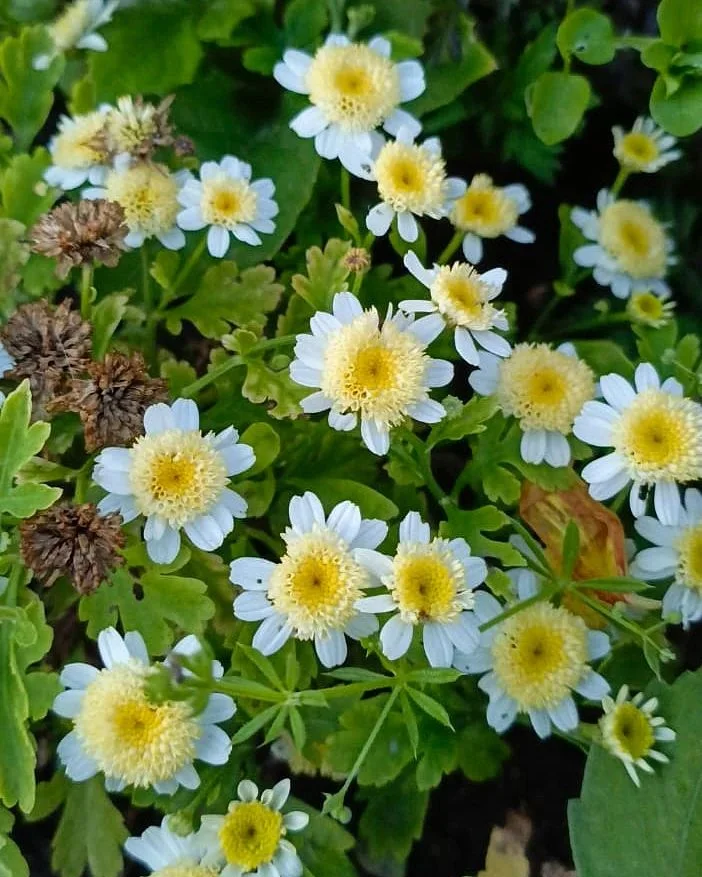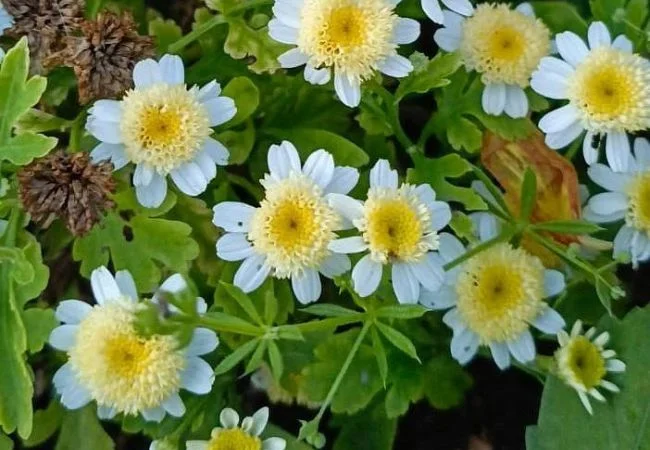Explore the world of Pyrethrum Flowers! Learn about their unique insect-repelling properties, how to grow them and their various uses. Discover why these daisy-like blooms are more than just pretty faces in your garden.
When you think of daisies, you probably picture simple white flowers with yellow centers. But there’s a special kind of daisy called Pyrethrum that’s known for more than just its looks. Let’s learn about this interesting flower and why it’s useful in gardens across the USA.
Here’s a detailed chart for Pyrethrum flowers:
| Category | Information |
|---|---|
| Botanical name | Tanacetum cinerariifolium (formerly Chrysanthemum cinerariifolium) |
| Common name | Pyrethrum, Dalmatian Chrysanthemum |
| Plant type | Perennial |
| Hardiness zone | Zones 3-7 |
| Sun exposure | Full sun |
| Soil type | Well-drained, average soil |
| Watering | Moderate watering |
| Growth habit | Upright |
| Height/Spread | 1-2 feet tall, 1-2 feet wide |
| Special features | Daisy-like white flowers with yellow centers; used as a natural insecticide; deer and rabbit resistant |
What Is Pyrethrum?

Pyrethrum is a type of flower that looks a lot like a daisy. It’s part of the Chrysanthemum family. The most common type is called Tanacetum cinerariifolium, but you might also hear it called the Dalmatian Daisy. These flowers are famous for their natural insect-repelling properties.
History and Uses
Pyrethrum has been used for centuries to keep insects away. The Environmental Protection Agency provides information on how pyrethrins, the active compounds in Pyrethrum, are used in pesticides today. These flowers have been grown commercially for their insecticidal properties since the 19th century.
Growing Pyrethrum
If you want to grow Pyrethrum in your garden, here’s what you need to know:
- Sunlight: They like full sun to partial shade.
- Soil: Well-draining soil is best.
- Water: They’re drought-tolerant once established.
- Hardiness: They can survive in USDA zones 3-7.
- Planting: Spring or fall are good times to plant.
For more detailed growing information, check out the Missouri Botanical Garden website.
Caring for Pyrethrum
Pyrethrum is relatively easy to care for:
- Water regularly until established, then only during dry spells.
- Deadhead spent blooms to encourage more flowers.
- Divide plants every 3-4 years to keep them healthy.
- Prune in late fall or early spring.
The Royal Horticultural Society offers additional tips on growing chrysanthemums, which apply to Pyrethrum as well.
Insect-Repelling Properties
Pyrethrum’s claim to fame is its ability to repel insects:
- The flowers contain natural compounds called pyrethrins.
- These compounds affect the nervous systems of many insects.
- They’re used in many organic gardening products.
- Pyrethrum can help protect other plants in your garden from pests.
For more on natural pest control, visit the University of California Integrated Pest Management page.
Using Pyrethrum in Your Garden
Here are some ways to use Pyrethrum:
- Plant them around the border of your vegetable garden.
- Use them in companion planting to protect other flowers.
- Dry the flowers to make your own insect-repelling sachets.
- Enjoy them as ornamental flowers in your landscape.
The National Gardening Association has resources on companion planting and natural pest control.
Potential Risks and Precautions
While Pyrethrum is natural, it’s important to use caution:
- Some people may be allergic to Pyrethrum.
- It can be toxic to beneficial insects like bees when used as a spray.
- Always follow safety guidelines when using Pyrethrum-based products.
For safety information, consult the National Pesticide Information Center.
Environmental Impact
Pyrethrum is often considered an eco-friendly option:
- It breaks down quickly in sunlight.
- It’s less persistent in the environment than many synthetic pesticides.
- However, it can affect non-target insects, so use it responsibly.
The United States Department of Agriculture conducts ongoing research on natural pest control methods.
Pyrethrum flowers are more than just pretty daisies. They offer a natural way to help control pests in your garden while also adding beauty to your landscape. Whether you’re an organic gardener or just looking for an interesting new plant, Pyrethrum might be worth trying.
Remember to always use any insect-repelling plants or products responsibly. Happy gardening and enjoy the beauty and benefits of Pyrethrum in your outdoor space!
For more gardening tips and plant care guides, visit usagardenhub.com.

